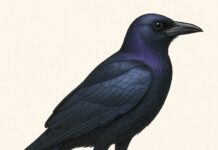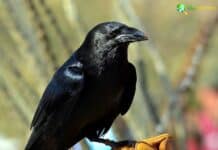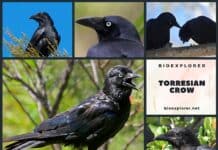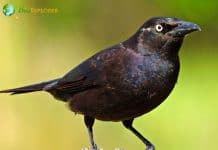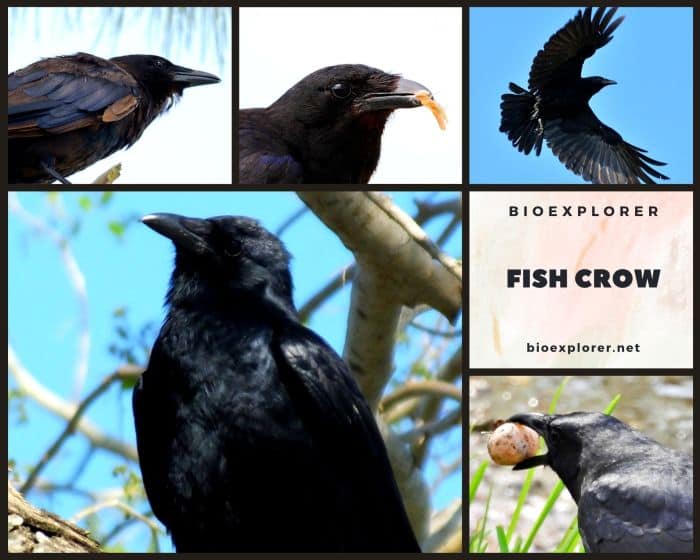
| Animalia | Aves | Passeriformes | Corvidae | Chordata | Corvus ossifragus |
The Fish Crow (Corvus ossifragus) is a common bird in some parts of the Southeast, resembling a smaller version of the American Crow but with a more nasal voice and a preference for areas near water.
It scavenges on the beach and hunts in salt marshes and tidal flats along the coast. It extends through swamps and along rivers in the interior. In some areas, particularly on the Atlantic coastal plain and far up the Mississippi Valley, it has recently expanded its range farther and farther inland.
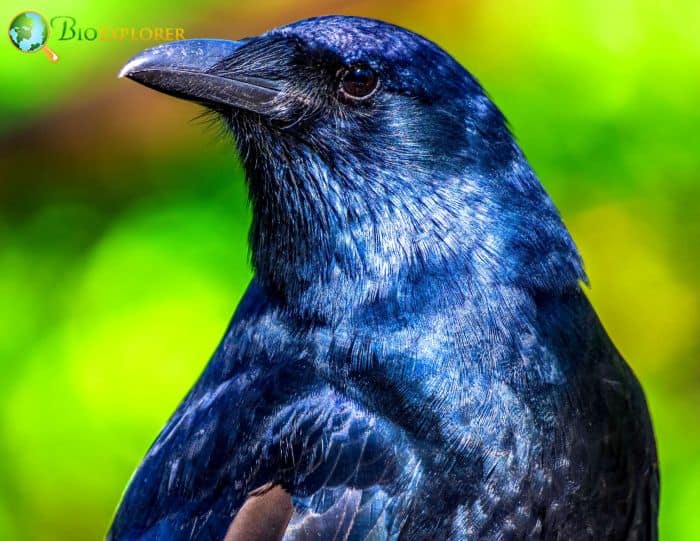
Table of Contents
- Fish Crow Physical Characteristics
- Fish Crows are extremely vocal
- Fish Crow feeding habits
- Fish Crows are more family oriented
- Fish Crows are potential scavengers
- Fish Crows can adopt other birds
- Frequently Asked Questions
- What is the difference between a crow and a fish crow?
- What is a fisher crow?
- What bird sounds like it’s saying uh oh?
- Where do fish crows live?
- Are fish crows endangered?
- Do fish crows eat fish?
Fish Crow Physical Characteristics
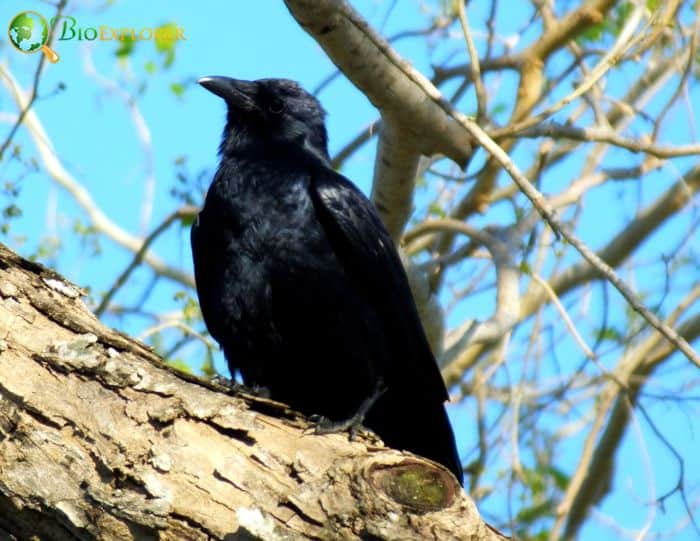
All black fish crows have black feathers, dark brown eyes almost black, black legs, and black beaks.
- These dark birds stand out from the others with glossier beaks and shinier feathers. They have a slightly lighter color that tends toward dark brown as they emerge from their eggs. As they get older, they molt and change into the all-black figure.
- The adult fish crows typically undergo two seasons of molting each year with little to no change in the appearance of their feathers or colors.
- However, during the second molt, their plumage becomes rougher, particularly close to the throat region on the body. The black feathers of these crows would have a blue-green tint.
Fish Crows are extremely vocal
It is well known that this bird communicates primarily through vocalizations[1]. They make the nasal noises “awwr“, “uh-uh“, and “cawk” every day.
- The call is typically used to scare away predators, identify the nesting area, and protect the family’s nest from competing fish crow species in their habitat.
- These birds are extremely vocal and loud during the breeding season. When breeding females require assistance from the males for their eggs and nestlings, they specifically make a nasal, high-pitched call.
- Although they don’t sing or have particular songs, fish crows have distinctive sounds.
Fish Crow feeding habits
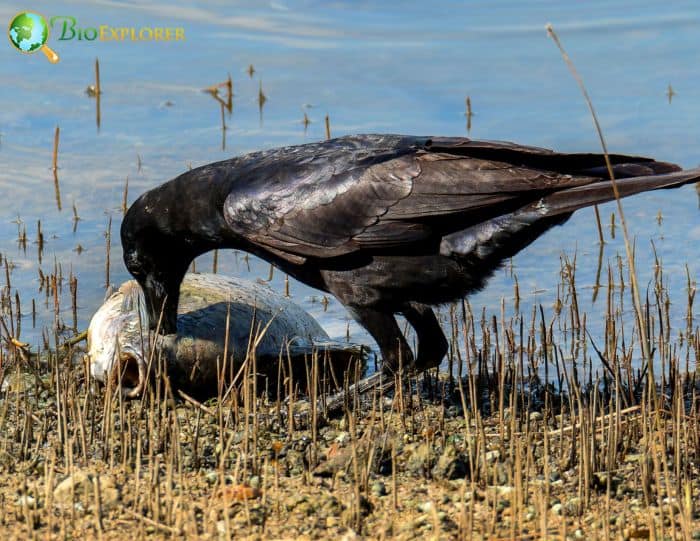
Fish crows are opportunists and will consume nearly anything they come across.
- A fish crow will eat various foods, including fish, carrion, shellfish, eggs, young birds, maize, insects, lizards, and cultivated fruits.
- Most food is consumed on the ground, but they have been observed hovering and using their feet to fish food from the water.
Fish Crows are more family oriented
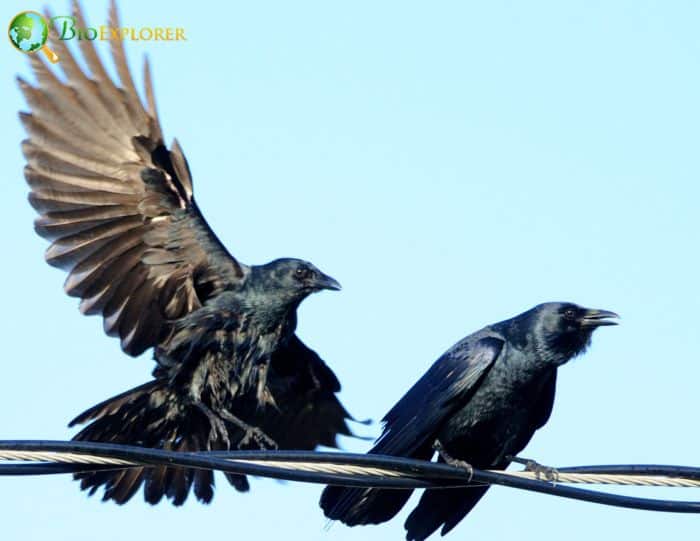
Fish Crows are more family-oriented than many people realize, in addition to being social birds. A mated pair will typically remain together for the rest of their lives because they are lifelong partners. Still, their family lives may also be a little more complicated than that would imply. Crows have a “monogamy” nature.
Fish Crows are potential scavengers
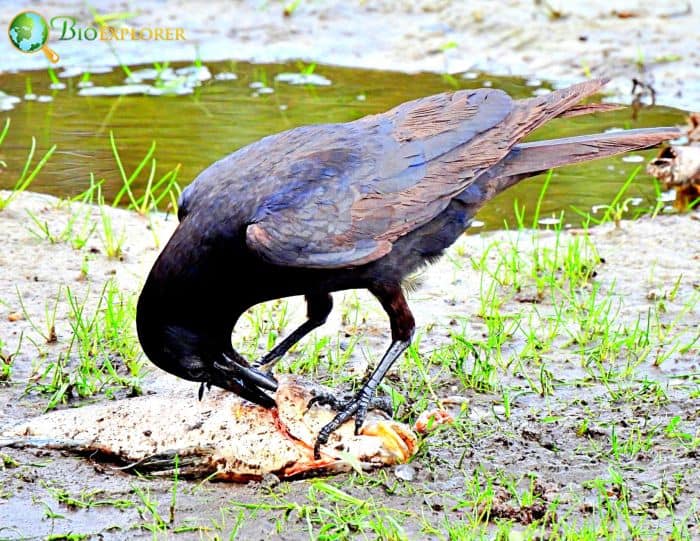
Fish Crows assist in the elimination of pest insects and “clean up” dead animals, trash, and other debris that other animals have dispersed.
- These crows prey on songbirds and their young. Still, research shows they typically do not significantly impact songbird populations.
- For example, robins have evolved to produce two to three clutches annually to make up for the young that crows take.
- Crows can, however, be a problem for people because they are shrewd, opportunistic[2], protective of their young, and occasionally congregate in large numbers.
Fish Crows can adopt other birds
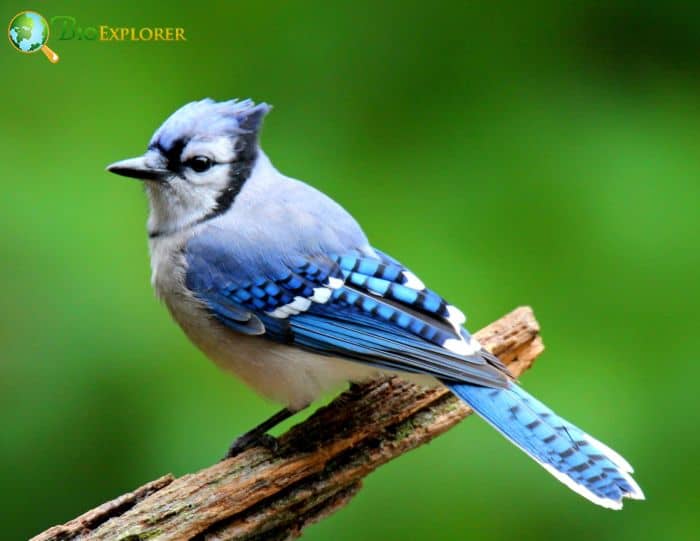
Fish Crows are known to adopt other birds, including a fledgling Blue Jay that appeared in the nest of a nesting pair of Fish Crows. The crows fed the jay for two weeks before it disappeared. This behavior is not common, but it has been observed in some cases[3].
Fish Crows build a new nest for each breeding attempt; the nests are well-made. One small area may have existing nests from up to four different years. McGowan (1990) reported that one nesting pair in Florida adopted a fledgling Blue Jay and fed it at their nest for 12 days before it disappeared.
Frequently Asked Questions
What is the difference between a crow and a fish crow?
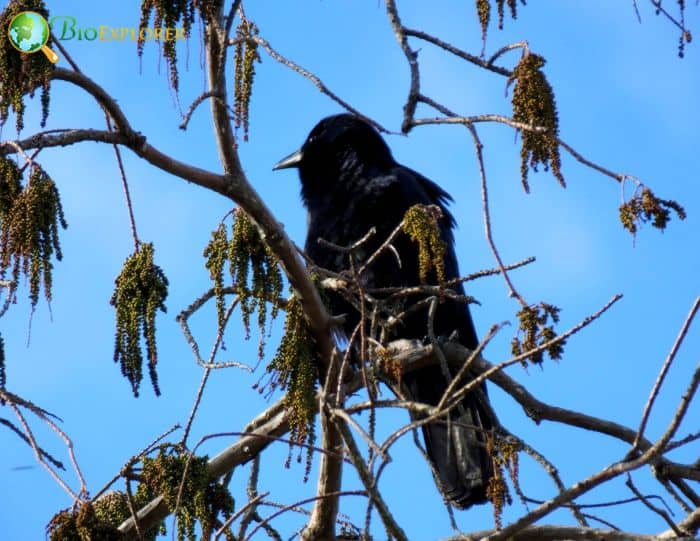
A crow and a fish crow are birds belonging to the corvid family. They are very similar in appearance, but some differences can help distinguish between them. Here are some key differences:
- Calls: The easiest way to separate American Crows and Fish Crows is by their calls. American Crows give a burry, full-throated “caw”, while Fish Crows are more nasal sounding, often giving short “cow” notes in pairs.
- Range: Fish Crows are typically found around water, along the Atlantic coast from southern Maine to Florida and up along the Gulf Coast to eastern Texas. They’re also found throughout the eastern and southeastern coastal plain and up the Mississippi River as far as Illinois and Kansas. American Crows also cover that range, so it can be difficult to distinguish between them based on location alone.
- Size: Fish Crows are about five inches shorter than American Crows.
- Wingbeat: Fish Crows have a faster wingbeat than American Crows.
- Posture: Fish Crows are more parallel to the ground, like a seagull, while American Crows stand more upright with their chests out.
Overall, the differences between a crow and a fish crow can be subtle and difficult to discern. Still, their calls and range can help distinguish the two[5].
What is a fisher crow?
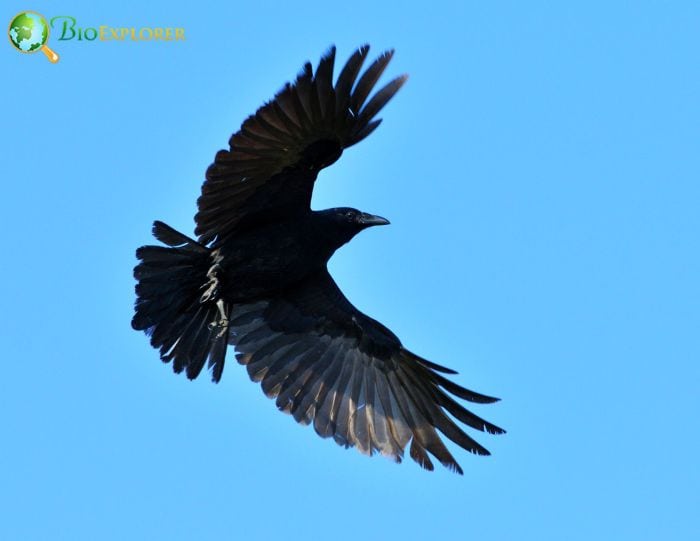
There is no real bird called “Fisher Crow”. The term may be a misspelling of “fish crow”, a bird species closely related to the American crow. Fish crows are often found around water, which is how they get their name, but they will eat various foods.
What bird sounds like it’s saying uh oh?
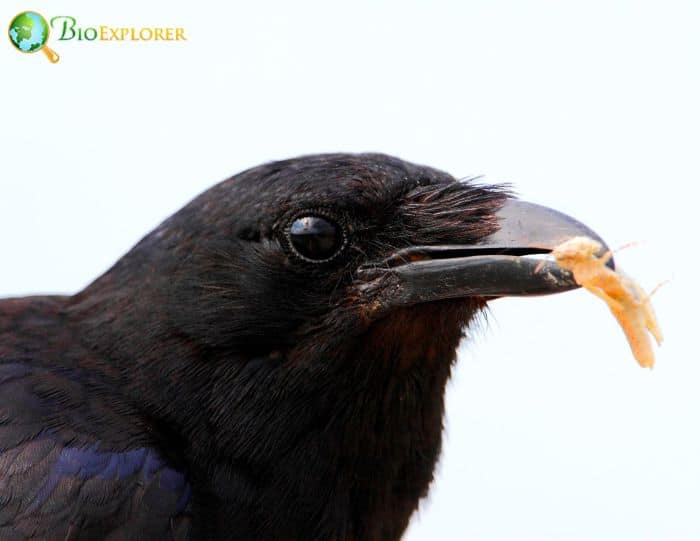
The bird often described as making a sound similar to “uh oh” is the Fish Crow (Corvus ossifragus). This species is found in the southeastern United States, and its call is often transcribed as “uh-uh” or “uh oh”, distinguishing it from the American Crow. The Fish Crow’s call is more nasal and can sound like a human mimicking a crow.
Another bird that might sound like it’s saying “uh oh” is the Yellow-billed Cuckoo (Coccyzus americanus). Their call is often described as a slow, descending “coo-coo-coo” that could be interpreted as “uh-oh”.
Bird calls can vary greatly, and interpreting what they sound like can be subjective. If you’re hearing a bird that sounds like it’s saying “uh oh”, it could be a different species depending on your location and the specific characteristics of the call[6].
Where do fish crows live?
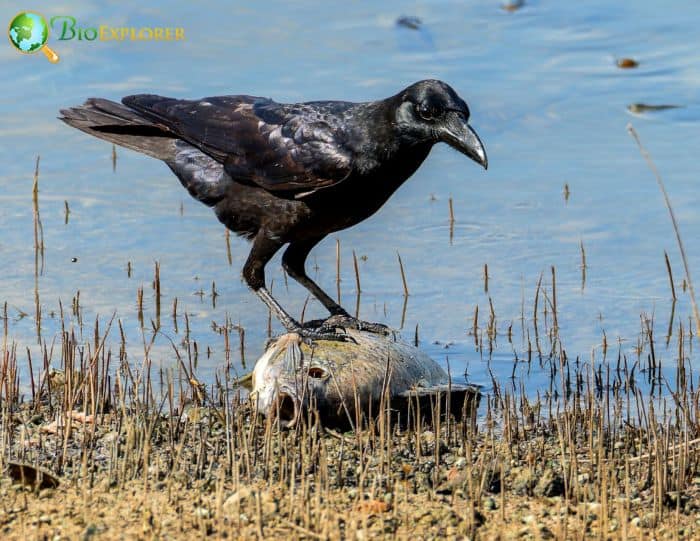
Fish Crows are native to the east coast of the United States but have been found as far west as Nebraska, Wyoming, Kansas, and Iowa.
- They are found along the Atlantic and Gulf coasts from Massachusetts and extreme southern New England south to Florida and west to Texas[7].
- Fish Crows are typically found around water, which is how they get their name, but they will eat various foods.
- They are year-round coastal residents from southern Maine to eastern Texas and inland up the Mississippi and its tributaries to Illinois.
- Fish Crows are also found throughout the eastern and southeastern coastal plains[8].
Are fish crows endangered?
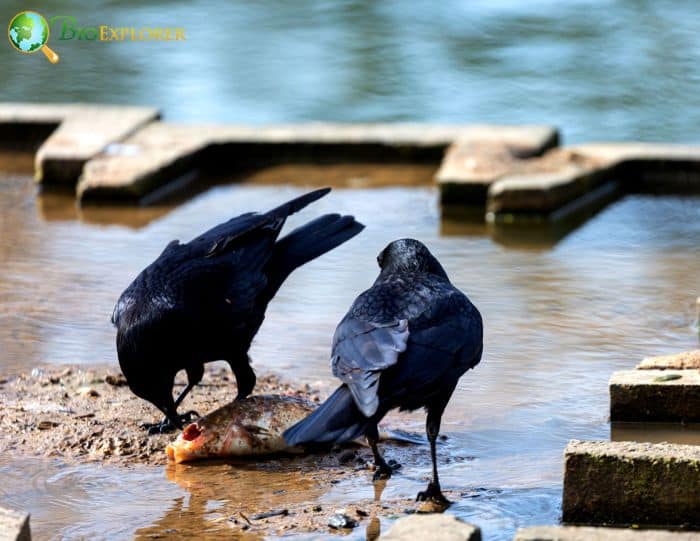
Fish Crows are not endangered. They are listed as a species of “Least Concern” on the IUCN Red List, and their populations are growing.
Do fish crows eat fish?
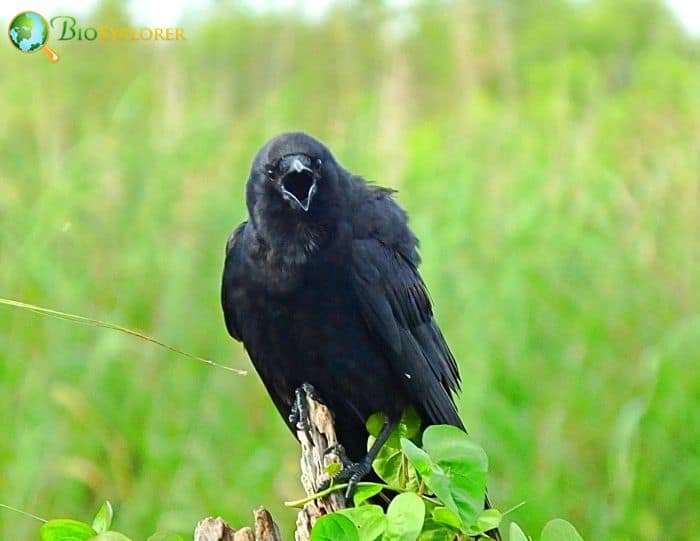
Fish Crows are omnivorous, and they eat a variety of foods. Although they are known for associating with water bodies, they do not exclusively eat fish.
Here are some of the foods that Fish Crows eat:
- Small crustaceans, such as crabs and shrimps.
- Other aquatic animals, such as crayfish and clams.
- Carrion
- Berries
- Nuts
- Insects
- Seeds
- Bird and turtle eggs.
- Garbage
Fish Crows are supreme generalists, eating just about anything they can find. They have expanded their range inland and northward along major river systems, and their populations are growing. Although they are not endangered, it is important to continue monitoring their populations to ensure that they remain stable[9].
![]()


